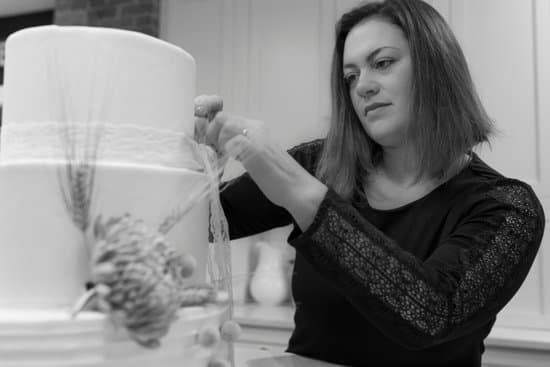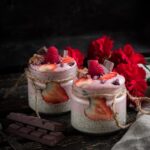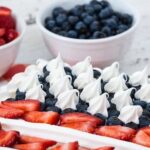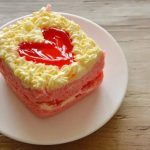Cake decorating frosting recipe is a crucial element in creating beautifully decorated cakes. Whether you’re a novice baker or a seasoned pro, the right frosting can elevate your cake from delicious to stunning. In this article, we’ll explore the importance of frosting in cake decorating and provide essential tips for achieving the perfect texture, consistency, and flavor.
When it comes to cake decorating, frosting serves as both an adhesive and a decorative element. It provides the smooth canvas on which intricate designs can be piped, spread, or sculpted. The type of frosting used can also greatly impact the overall flavor of the cake, making it an essential component of any successful cake decorating project.
In this comprehensive guide, we will cover everything from essential ingredients for cake decorating frosting to step-by-step instructions for making buttercream frosting. We will also explore different types of frosting, flavor variations, decorating techniques, and troubleshooting common frosting issues. Whether you’re looking to master classic buttercream or experiment with more elaborate fondant designs, this article has everything you need to take your cake decorating skills to the next level.
Types of Frosting
Buttercream Frosting
Buttercream frosting is a classic choice for cake decorating due to its creamy texture and versatility. Made with a base of butter, powdered sugar, and flavorings, buttercream can be easily tinted with food coloring for vibrant decorations.
It can also be piped into various shapes and designs, making it a popular choice for intricate cake decorations. Whether you prefer American buttercream (made with powdered sugar) or Swiss meringue buttercream (made with egg whites), this type of frosting is essential for any cake decorator.
Cream Cheese Frosting
Cream cheese frosting is known for its tangy flavor and smooth consistency, making it the perfect complement to rich cakes like red velvet or carrot cake. With just cream cheese, butter, powdered sugar, and vanilla extract, you can create a luscious frosting that adds depth of flavor to your cakes. Cream cheese frosting is often spread in layers between cake tiers or piped on top for a decadent finish.
Whipped Frosting
Light and airy whipped frosting is a favorite among those who prefer a less sweet option. Made with whipped cream, sugar, and vanilla extract, this type of frosting provides a delicate topping that doesn’t overpower the flavors of the cake. Whipped frosting is ideal for summery cakes or as a subtle accompaniment to fruit-filled desserts.
Fondant
While not technically a “frosting,” fondant is often used in cake decorating to create smooth, flawless finishes on cakes. Made from sugar, water, gelatin, and glycerin, fondant can be rolled out into sheets and draped over cakes for a polished look. It can also be shaped and molded into intricate decorations such as flowers or ribbons.
By understanding the unique qualities of each type of frosting, you can choose the best option to enhance your cake designs and bring your creative vision to life using our cake decorating frosting recipe.
Essential Ingredients for Cake Decorating Frosting
When it comes to creating the perfect cake decorating frosting recipe, it’s essential to have the right ingredients on hand. The type of frosting you choose will dictate which ingredients you need, but there are some basic components that are commonly used in most frosting recipes.
One of the main ingredients is confectioners’ sugar, also known as powdered sugar, which provides sweetness and helps create a smooth texture. Another key ingredient is butter or shortening, which adds richness and helps to stabilize the frosting.
In addition to confectioners’ sugar and butter, other common ingredients for cake decorating frosting include vanilla extract for added flavor, milk or heavy cream for thinning out the consistency, and a pinch of salt to balance the sweetness. Some recipes may also call for egg whites or meringue powder to create a light and fluffy texture.
Depending on the type of frosting you’re making, you may also need cream cheese, cocoa powder, fruit puree, or food coloring to achieve your desired flavor and color.
| Ingredient | Function |
|---|---|
| Confectioners’ Sugar | Provides sweetness and creates a smooth texture |
| Butter/Shortening | Adds richness and helps to stabilize the frosting |
| Vanilla Extract | Enhances flavor |
| Milk/Heavy Cream | Thins out consistency |
Step-by-Step Instructions for Making Buttercream Frosting
Buttercream frosting is a classic and versatile option for cake decorating. It’s relatively easy to make and can be flavored and colored in countless ways to suit any occasion. To make your own buttercream frosting, you’ll need the following ingredients: unsalted butter, confectioners’ sugar, vanilla extract, and heavy cream.
Start by allowing the unsalted butter to come to room temperature. Using a stand mixer or a hand mixer, beat the butter on medium speed until it becomes creamy and smooth. This usually takes about 3-5 minutes. Then, gradually add in the confectioners’ sugar, one cup at a time, while continuing to mix on low speed.
Once all of the confectioners’ sugar has been added, increase the speed of the mixer to medium and pour in the vanilla extract and heavy cream. Beat the mixture for an additional 3-5 minutes until it becomes light and fluffy. Your buttercream frosting is now ready to use for decorating your cakes.
A great thing about buttercream frosting is that it can be easily customized with different flavors. For a chocolate variation, simply add cocoa powder to the mixture during the mixing process. Other popular flavor variations include vanilla, lemon, and raspberry, which can be achieved by incorporating extracts or fruit purees into the base recipe.
| Ingredient | Amount |
|---|---|
| Unsalted Butter | 1 cup (2 sticks) |
| Confectioners’ Sugar | 4 cups |
| Vanilla Extract | 1 tsp |
| Heavy Cream | 2-4 tbsp |
By using this cake decorating frosting recipe as a starting point, you can experiment with different techniques for applying it to your cakes. Whether you choose to pipe intricate designs or simply spread the frosting smoothly over your cake’s surface, buttercream allows for endless creativity in cake decorating. Mastering this fundamental frosting recipe will undoubtedly elevate your skills as a baker and decorator.
Tips for Achieving the Perfect Texture and Consistency
Room Temperature Ingredients
One of the key factors in achieving the perfect texture and consistency for your cake decorating frosting recipe is using room temperature ingredients. This is especially important for buttercream frosting, as cold butter can lead to a lumpy and inconsistent mixture. Allow your butter, cream cheese, and other dairy ingredients to sit at room temperature for about 30 minutes before starting your frosting recipe. This will ensure that they blend together smoothly, resulting in a creamy and luxurious texture.
Gradually Adding Ingredients
Another tip for achieving the perfect texture and consistency is to gradually add your ingredients while mixing. Whether you’re making buttercream, cream cheese, or whipped frosting, adding the ingredients slowly will help them incorporate evenly into the mixture.
For example, when making buttercream frosting, start by beating the butter on its own until it’s creamy, then gradually add the powdered sugar one cup at a time. This method prevents clumps and ensures that your frosting has a smooth and fluffy consistency.
Proper Mixing Techniques
The way you mix your cake decorating frosting recipe can also impact its texture and consistency. Overmixing can lead to a thin and runny frosting, while undermixing can result in a lumpy or gritty texture. When mixing your frosting, use a stand mixer or hand mixer on medium speed to achieve the perfect balance.
Stop periodically to scrape down the sides of the bowl with a spatula to ensure all ingredients are fully incorporated. By following these tips for achieving the perfect texture and consistency, you’ll be able to create beautiful and delicious frosted cakes every time.
Flavor Variations
When it comes to cake decorating, the flavor of the frosting is just as important as its appearance. The right flavor can complement the cake and take your creation to the next level. Below are some delicious flavor variations for your cake decorating frosting recipe:
- Chocolate: Chocolate frosting is a classic choice that pairs well with a variety of cakes, from chocolate to vanilla to red velvet. For a rich and decadent chocolate frosting, you can use cocoa powder or melted chocolate in your recipe.
- Vanilla: A simple yet elegant choice, vanilla frosting is versatile and can be used on any type of cake. For a twist, you can add vanilla bean seeds or even a splash of vanilla extract for an extra burst of flavor.
- Lemon: Lemon frosting adds a refreshing and tangy touch to cakes. You can incorporate lemon zest or lemon juice into your frosting recipe to achieve that zesty flavor profile.
- Raspberry: For a fruity and vibrant option, raspberry frosting is a great choice. You can use fresh raspberries or raspberry preserves to infuse your frosting with sweet and tart flavors.
Experimenting with different flavor variations can help you create unique and memorable cakes. Whether you prefer the richness of chocolate, the warmth of vanilla, the brightness of lemon, or the fruitiness of raspberry, there’s a flavor variation to suit every taste and occasion when it comes to cake decorating frosting recipes.
Remember to adjust the sweetness and consistency of your frosting based on the flavors you choose. With these flavor variations at your disposal, you can elevate your cake decorating by adding an extra layer of deliciousness to your creations.
Decorating Techniques
When it comes to cake decorating, mastering different frosting application techniques is essential to achieving professional-looking results. Whether you are a beginner or an experienced baker, knowing how to expertly pipe, spread, and sculpt your frosting will take your cake decorating skills to the next level.
- Piping: Piping is a technique that involves using a piping bag fitted with various tips to create intricate designs and patterns on cakes and other baked goods. This technique allows for precise detailing and can be used to create beautiful borders, flowers, and lettering. Some popular piping tips include round tips for outlines and writing, star tips for rosettes and swirls, and leaf tips for leaf shapes.
- Spreading: Spreading frosting evenly across the surface of a cake is a fundamental skill in cake decorating. To achieve a smooth finish, start by applying a thin layer of frosting as a crumb coat, then chill the cake before applying a final layer of frosting. Use an offset spatula or bench scraper to spread the frosting in long, smooth strokes around the sides and top of the cake.
- Sculpting: Sculpting with frosting allows you to create three-dimensional decorations such as flowers, figures, and sculpted elements. This technique requires a firmer consistency of frosting that holds its shape well. Use sculpting tools or even simple kitchen utensils like toothpicks or butter knives to carve and shape the frosting into intricate designs. Practice sculpting with different textures of frosting to see what works best for your desired effect.
Mastering these decorating techniques will not only enhance the appearance of your cakes but also allow you to unleash your creativity when it comes to cake decorating. Whether you are creating a simple birthday cake or an elaborate wedding cake, understanding how to expertly pipe, spread, and sculpt your cake decorating frosting will elevate your confectionery creations from ordinary to extraordinary.
Troubleshooting Common Frosting Issues
Frosting can make or break a cake decorating masterpiece, but it doesn’t always come out perfectly. There are common issues that can arise when working with frosting, such as cracking, melting, and deflating. Understanding how to troubleshoot these problems is key to achieving a professional-looking result.
One common issue with frosting is cracking. This can happen when the frosting dries out too much or is applied too thinly. To prevent cracking, make sure your cake layers are properly leveled before applying the frosting. Additionally, consider adding a thin layer of simple syrup to the cake layers before frosting to keep them moist.
Another common problem is melting frosting, especially in warm weather or hot kitchen environments. To prevent this issue, use high-quality ingredients and avoid overmixing the frosting. If you find that your frosting is melting, try placing the cake in the refrigerator for a short time to allow the frosting to firm up.
Deflating frosting can also be an issue when air bubbles are not properly incorporated during mixing or if the temperature of the ingredients is too warm. To avoid this problem, be sure to mix your ingredients on low speed and use room temperature butter and cream cheese for stability. If your frosting does deflate, try gently folding in additional powdered sugar to regain volume.
These troubleshooting tips can help you overcome common frosting issues and ensure that your cake decorating efforts are met with success. With a little patience and practice, you’ll become adept at creating beautiful cakes with perfectly frosted exteriors using your favorite cake decorating frosting recipe.
Conclusion
In conclusion, mastering the art of cake decorating frosting recipe is an essential skill for any baker or cake decorator. The right frosting can take a plain cake to a whole new level, transforming it into a stunning and delicious work of art. Whether you choose buttercream, cream cheese, whipped, or fondant, the key to success lies in using high-quality ingredients and following the proper techniques.
After exploring the various types of frosting and essential ingredients needed for cake decorating, it’s clear that making the perfect frosting requires attention to detail and a good understanding of the science behind it. From achieving the right texture and consistency to experimenting with different flavors like chocolate, vanilla, lemon, and raspberry, there are endless opportunities to get creative with your frostings and elevate your cake decorating game.
Additionally, learning different decorating techniques such as piping, spreading, and sculpting can add another dimension to your cakes. And by familiarizing yourself with common frosting issues like cracking, melting, and deflating, you’ll be better equipped to troubleshoot should anything go wrong. With the knowledge gained from this article and some practice in the kitchen, you’ll soon be on your way to creating beautifully decorated cakes with the perfect frosting every time.
Frequently Asked Questions
What Frosting Is Best for Decorating Cakes?
The best frosting for decorating cakes is typically buttercream or cream cheese frosting. These types of frostings hold their shape well, making them perfect for piping designs and creating smooth finishes on cakes.
What Frosting Do Professionals Use for Cakes?
Professionals often use Swiss meringue buttercream or Italian meringue buttercream for cakes. These frostings are more stable and have a smoother texture, allowing decorators to create intricate designs and flawless finishes on their cakes.
What Is the Difference Between Buttercream and Decorating Icing?
The main difference between buttercream and decorating icing is the texture and stability. Buttercream is made with butter, giving it a richer flavor and a creamier texture, while decorating icing is usually made with shortening or meringue powder for added stability when piping decorations. Both are commonly used for cake decorating, but each has its own unique characteristics.

Welcome to our cake decorating blog! My name is Destiny Flores, and I am the proud owner of a cake decorating business named Cake Karma. Our mission is to provide delicious, beautiful cakes for all occasions. We specialize in creating custom cakes that are tailored specifically to each customer’s individual needs and tastes.





